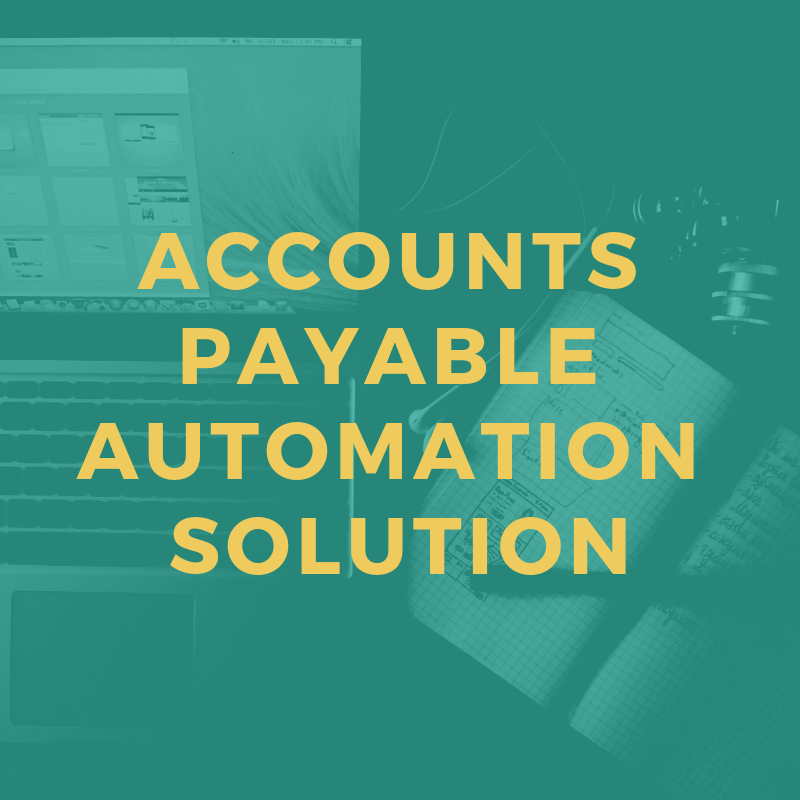Automating accounts payable with intelligent automation
Almost every business carries out the accounts payable process. There are a number of steps to the process, and if a single step or a single number is incorrectly input, even more work is required to fix the process.

Almost every business carries out the accounts payable process. There are a number of steps to the process, and if a single step or a single number is incorrectly input, even more work is required to fix the process.

In most businesses, each of the above five steps are carried out by hand. The only problem is that it can be quite time consuming reading through each invoice and copying the many details into your own accounting software. Assuming it takes about 15 minutes to go through all of the five steps for an invoice, when you multiply those 15 minutes by the total number of invoices processed in a month, you start to spend tens or hundreds of hours just documenting and verifying the invoices.
Invoices as semi-structured documents
All invoices contain generally the same type of information: Invoice number, invoice date, invoice amount, due date, supplier name, supplier address, line items, payment details.
The recurring data types make this a semi-structured document in the sense that those items are showing up. However the location, format, and size of these data points are different on each invoice. A person can easily look at an invoice and know which number is the total amount owing, or the amount of tax added. It’s not as easy for a computer to extract the details from the document, because it doesn’t know where to look. The way many companies have automated this “data capture process” over twenty years has been by templates and OCR.

Automation using templates and OCR
Many companies have implemented Optical Character Recognition (OCR) into their accounts payable process. This is commonly done by creating templates for each specific invoice that is received. The computer is taught where to look to extract key details, and which values on the invoice are which.
This means in order to process a invoice, it must first have a template created for that specific kind of invoice. This in itself adds an additional delay on top of everything else. In order to 100% automate your accounts receivable process, you would need to create at least as many templates as you have unique invoice layouts. Creating, and maintaining so many templates adds a significant amount of work to this automation process.
It’s almost not worth it to automate your accounts payable process with templates, because you have almost the same amount of work as before; except the work is being carried out by IT or Administrative Staff who need to maintain the templates.
Artificial intelligence and accounts payable
With recent advances in machine learning, neural networks and artificial intelligence, it is now possible to automatically extract key data points from invoices, much in the same way a person would.
This is a significant improvement compared to the older template model of extracting key data points. Instead of using a very specific template which can apply to only one kind of invoice, artificial intelligence applies a more general template and knows how to read the details.
By eliminating the maintenance of templates, the number of invoices you can process automatically jumps up significantly. Whereas before it may have been possible to automate up to 60% or 70% of all invoices with a large quantity of templates, it is now possible to automate data capture from 80% to 95% of all invoices.
How can DigitalStaff leverage AI to extract data from invoices?
There are a number of third party companies that provide “artificial intelligence as a service”. Usually these teams have people with PhDs in math and computer science who have written advanced computer programs that are able to read documents like a human, and extract the correct data points. These companies have “trained” their artificial intelligence on tens of thousands of unique invoices and they are giving us the ability to use their AI for a fee.
The way it works is that we send the invoice to the artificial intelligence. The AI then analyzes the invoice, and sends us the unique values. We take the values and we then enter them into your ERP or accounting software.
How does the AI know that the information is correct?
Artificial intelligence has a “confidence” rating on the values that it extracts. The confidence of the score increases when the value matches a number of other cases, like the information is near the suppliers name, or related information is nearby.
As an example, let’s look at the invoice that was linked above, specifically in the “Seller company details” section.

If it is really sure of an address, then it will have a high confidence score.
Let’s look at the output from the AI for the following invoice.
“content”: “London NW1 6XE”
“score”: 0.6010330215081503
“title”: “Recipient Address Line”
In the top left of the invoice, we have the supplier’s details, including the city and postal code. We can see the AI gave the content “London, NW1 6XE” a score of about 60% in the likelihood that it is the “Recipient Address Line”.
Our AI has looked at this same address in a different light:
“content”: “London NW1 6XE”
“score”: 0.874196719665284
“title”: “Supplier Address Line”
Now when the AI sees the address and corresponds the address to match with the supplier, the AI is 87% sure it is right. The AI makes the assumption that the address “London NW1 6XE” is most likely to be the supplier’s address line.
While the AI is processing the invoice, it is making many different assumptions about the data. When the AI is finished processing, the most likely data point for that category (e.g. “Supplier Address Line”) is identified as correct.
Verifying the extracted values
Sometimes, the values extracted from the invoice are wrong. Generally, the AI will give us an indication that the data contained within is incorrect. When we receive that message, we will have a person compare the extracted values against the invoice. It’s easy enough to compare, and fix the values.
We often have someone from your organization verify the extracted content before the data moves to the next point in the process. We do this simply because then we are being more careful with the data by ensuring it is correct right from the start, and because it is fairly quick to verify an invoice - 60 seconds on average - so it doesn’t take an exceptional amount of time.
We have the invoice data, now what?
Whether we use a person, a template, or artificial intelligence to extract the key data points from the invoice, we have only completed one step of the accounts payable process. We now have to copy the data into our ERP, perform further checks on the invoice to ensure we have received inventory, and finally we need to pay our supplier.
This is where Robotic Process Automation (RPA) comes into play. Our RPA solution can take the data, input into the system, and carry out additional accounts payable tasks automatically. Our software can also call on a person to verify data before continuing on to the next step.
Why is now the right time to start using DigitalStaff’s accounts payable automation solution?
Technology and the automatic capturing of data from invoices has reached accuracy of 90% and higher, without the need to spend time creating templates for each invoice. What this means for you, is that we can more quickly and more cost effectively automate your accounts payable process.
Imagine a world where you were 15x more efficient. Instead of processing 4 invoices per hour you could process upwards of 60 in the same amount of time. You would have significantly more time and resources to put towards other value generating activities.
More than just accounts payable
While automating accounts payable is a great place to start in business process automation, there are many more processes that can be automated. When there are more processes acting together greater benefits can be realized.
Pros and cons of AI, templates + OCR, and people in AP

About DigitalStaff
Our customers want to save time and money while increasing speed and quality of work. That’s why we build solutions that digitize and automate repeatable business processes so that our customers can focus on what really matters; building their businesses.
Our services range from automating single processes with few inputs to rolling out scalable enterprise solutions with many dynamic processes.
To learn more about how we can help you, please visit us at www.digitalstaff.ca or call us at 1 (844) 255-0840.
DigitalStaff
201 King Street
London, ON, N6A 1C9



